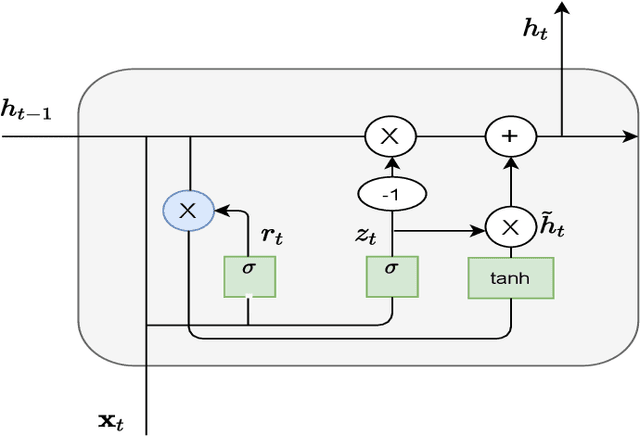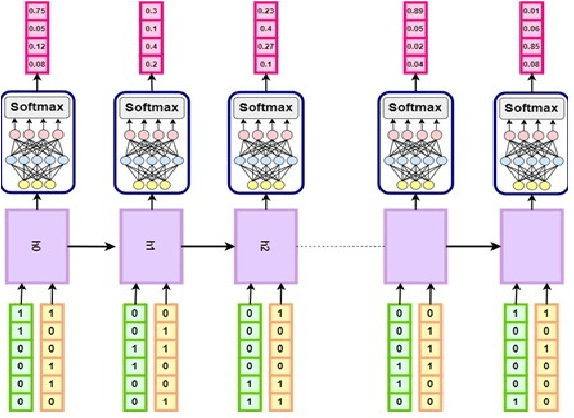Ali Pourranjbar
Machine learning empowered Modulation detection for OFDM-based signals
Aug 15, 2024Abstract:We propose a blind ML-based modulation detection for OFDM-based technologies. Unlike previous works that assume an ideal environment with precise knowledge of subcarrier count and cyclic prefix location, we consider blind modulation detection while accounting for realistic environmental parameters and imperfections. Our approach employs a ResNet network to simultaneously detect the modulation type and accurately locate the cyclic prefix. Specifically, after eliminating the environmental impact from the signal and accurately extracting the OFDM symbols, we convert these symbols into scatter plots. Due to their unique shapes, these scatter plots are then classified using ResNet. As a result, our proposed modulation classification method can be applied to any OFDM-based technology without prior knowledge of the transmitted signal. We evaluate its performance across various modulation schemes and subcarrier numbers. Simulation results show that our method achieves a modulation detection accuracy exceeding $80\%$ at an SNR of $10$ dB and $95\%$ at an SNR of $25$ dB.
Recurrent Neural Network-based Anti-jamming Framework for Defense Against Multiple Jamming Policies
Aug 19, 2022



Abstract:Conventional anti-jamming methods mainly focus on preventing single jammer attacks with an invariant jamming policy or jamming attacks from multiple jammers with similar jamming policies. These anti-jamming methods are ineffective against a single jammer following several different jamming policies or multiple jammers with distinct policies. Therefore, this paper proposes an anti-jamming method that can adapt its policy to the current jamming attack. Moreover, for the multiple jammers scenario, an anti-jamming method that estimates the future occupied channels using the jammers' occupied channels in previous time slots is proposed. In both single and multiple jammers scenarios, the interaction between the users and jammers is modeled using recurrent neural networks (RNN)s. The performance of the proposed anti-jamming methods is evaluated by calculating the users' successful transmission rate (STR) and ergodic rate (ER), and compared to a baseline based on Q-learning (DQL). Simulation results show that for the single jammer scenario, all the considered jamming policies are perfectly detected and high STR and ER are maintained. Moreover, when 70 % of the spectrum is under jamming attacks from multiple jammers, the proposed method achieves an STR and ER greater than 75 % and 80 %, respectively. These values rise to 90 % when 30 % of the spectrum is under jamming attacks. In addition, the proposed anti-jamming methods significantly outperform the DQL method for all the considered cases and jamming scenarios.
Jamming Pattern Recognition over Multi-Channel Networks: A Deep Learning Approach
Dec 19, 2021



Abstract:With the advent of intelligent jammers, jamming attacks have become a more severe threat to the performance of wireless systems. An intelligent jammer is able to change its policy to minimize the probability of being traced by legitimate nodes. Thus, an anti-jamming mechanism capable of constantly adjusting to the jamming policy is required to combat such a jammer. Remarkably, existing anti-jamming methods are not applicable here because they mainly focus on mitigating jamming attacks with an invariant jamming policy, and they rarely consider an intelligent jammer as an adversary. Therefore, in this paper, to employ a jamming type recognition technique working alongside an anti-jamming technique is proposed. The proposed recognition method employs a recurrent neural network that takes the jammer's occupied channels as inputs and outputs the jammer type. Under this scheme, the real-time jammer policy is first identified, and, then, the most appropriate countermeasure is chosen. Consequently, any changes to the jammer policy can be instantly detected with the proposed recognition technique allowing for a rapid switch to a new anti-jamming method fitted to the new jamming policy. To evaluate the performance of the proposed recognition method, the accuracy of the detection is derived as a function of the jammer policy switching time. Simulation results show the detection accuracy for all the considered users numbers is greater than 70% when the jammer switches its policy every 5 time slots and the accuracy raises to 90% when the jammer policy switching time is 45.
Reinforcement Learning for Deceiving Reactive Jammers in Wireless Networks
Mar 25, 2021



Abstract:Conventional anti-jamming method mostly rely on frequency hopping to hide or escape from jammer. These approaches are not efficient in terms of bandwidth usage and can also result in a high probability of jamming. Different from existing works, in this paper, a novel anti-jamming strategy is proposed based on the idea of deceiving the jammer into attacking a victim channel while maintaining the communications of legitimate users in safe channels. Since the jammer's channel information is not known to the users, an optimal channel selection scheme and a sub optimal power allocation are proposed using reinforcement learning (RL). The performance of the proposed anti-jamming technique is evaluated by deriving the statistical lower bound of the total received power (TRP). Analytical results show that, for a given access point, over 50 % of the highest achievable TRP, i.e. in the absence of jammers, is achieved for the case of a single user and three frequency channels. Moreover, this value increases with the number of users and available channels. The obtained results are compared with two existing RL based anti-jamming techniques, and random channel allocation strategy without any jamming attacks. Simulation results show that the proposed anti-jamming method outperforms the compared RL based anti-jamming methods and random search method, and yields near optimal achievable TRP.
 Add to Chrome
Add to Chrome Add to Firefox
Add to Firefox Add to Edge
Add to Edge